From her cozy home in downtown Toronto, fine art photographer Barbara Cole gestures to the in-ground pool in her backyard. “It is my office, my studio,” she says. She smiles, rises from her couch, looks out at the pool, and adds, “In fact, it is when I am in the pool—swimming in that wonderful water—that I get all my ideas. It’s kind of magical.”
Anyone familiar with Cole’s work, especially the painterly underwater images for which she’s famous, won’t be surprised by her admission. Her creative process would intrigue anyone who’s admired her varied body of work. That process typically begins, no surprise, shortly after Cole dives into her backyard pool.
“There is something that happens when I am swimming,” explains the award-winning 70-year-old photographer whose work is widely collected. She swims almost every day during Toronto’s warmer months. “At first, when I am swimming, I am concerned with things like my breathing, or how long I should swim—earthly details like that. But as I move through the water, I suddenly find myself mulling over my day or the project I am working on. And invariably, I get an answer to a question about my work that has been troubling me. It’s like being in the water has triggered a brainstorm.”
That creative spark doesn’t ignite when she’s doing other things, Cole explains, like walking the dog or driving the car. “Swimming is where I can zone out completely. I am just swimming. Then I get an idea and say, Wow, where did that come from? And I can explore it.”
Exploration is a recurring theme in Cole’s creative process, and it has shaped her career. “My work is based on instinct, trial and error,” says Cole. “I am often trying things out and am often making mistakes. But I learn from them.” She’s a habitual problem solver: “I always think there is an answer. Maybe I just don’t know how complex some of these ideas can be. But I just have to keep working to get there.”
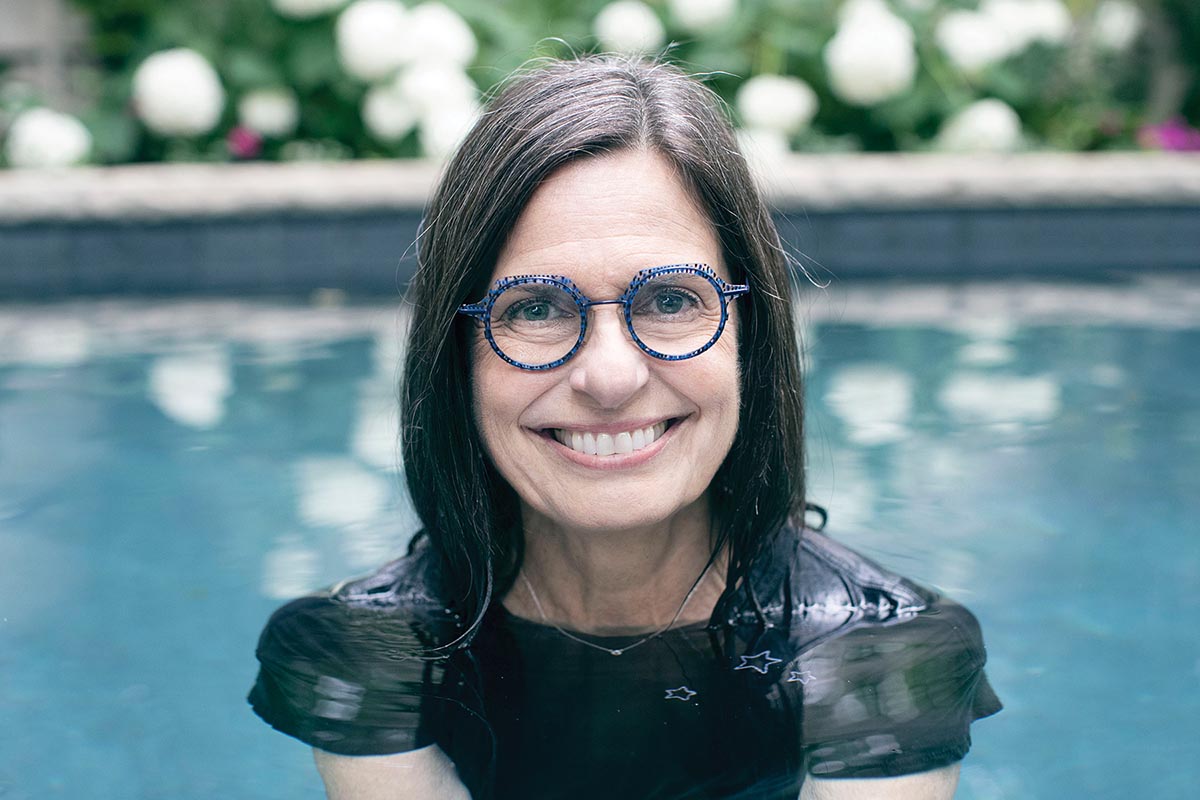
Photographer Barbara Cole
LIKE PAINTING
Cole worked as a model when she was in her teens then was offered a job as a fashion writer with the newly opened Toronto Sun newspaper when she was 18. “Amazing, wasn’t it?” says Cole. “I loved it and stayed there 10 years and learned photography from the paper’s staff photographers.” She left the newspaper and opened her own photography studio before she was 30.
Cole had fashion and commercial clients, but her real interest was creating abstract, painterly images. “Although I had worked at a newspaper, I had no real interest in documenting anything,” she says. “The precision of photography didn’t interest me. I wanted to create images that didn’t look like anyone else’s and expressed feelings, emotions, and more.”
Her aha moment arrived when she discovered she could manipulate Polaroid film to get the painterly, abstract look she was after. “Pushing and messing around with the film’s gel,” is how she explains the process that delivered the hands-on quality she wanted. “Using Polaroid SX-70 film was like painting with a brush,” says Cole.
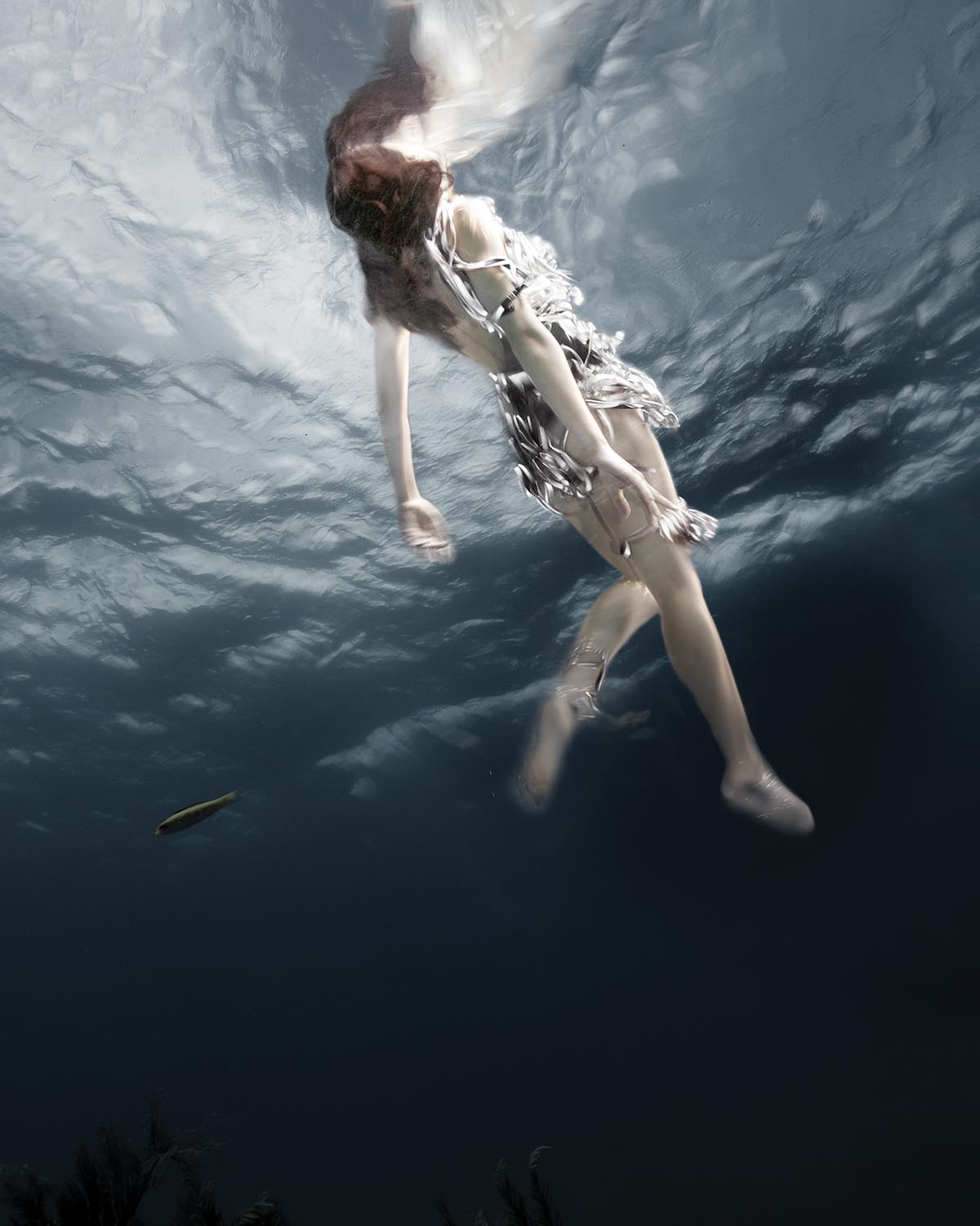
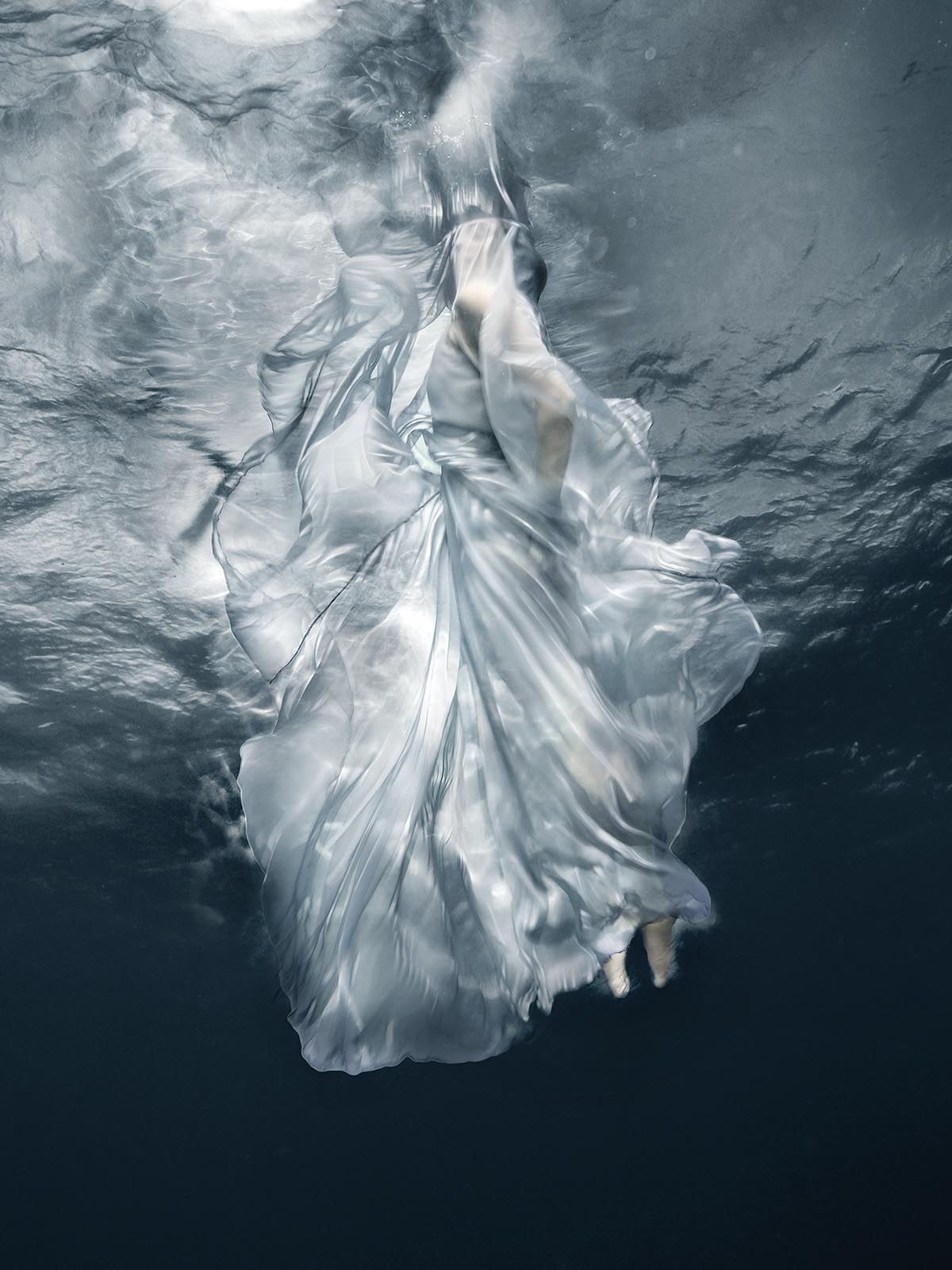
When Polaroid went bankrupt and the film disappeared in the late 1990s, Cole was shocked, she confesses. After exploring ways to continue making abstract images, she realized photographing underwater in her pool might be the answer. “I remember one day when I was swimming, I looked up and realized everything had this filmy-like quality that reminded me of Polaroid film,” she explains, “Water changes everything. It is like a beautiful foreign country and is a natural lens that reinterprets the artistic aesthetic. It can transform reality. I felt I could use water to change and mutate figures.”
ALL IN
Cole dove into her new medium and just kept going. For the past 24 years she has been capturing graceful, dreamlike figures gliding, dancing, and seemingly floating through time, space, and water. Using a slow shutter speed underwater, she explains, “helped me capture a person’s soul and get that magical moment.” As one critic has noted, “The combination of water, bodies, and light is Cole’s magic formula, allowing her to make joy, happiness, devotion, strength, love, courage, self-confidence, grief, inner turmoil, and optimism come to life in her art.”
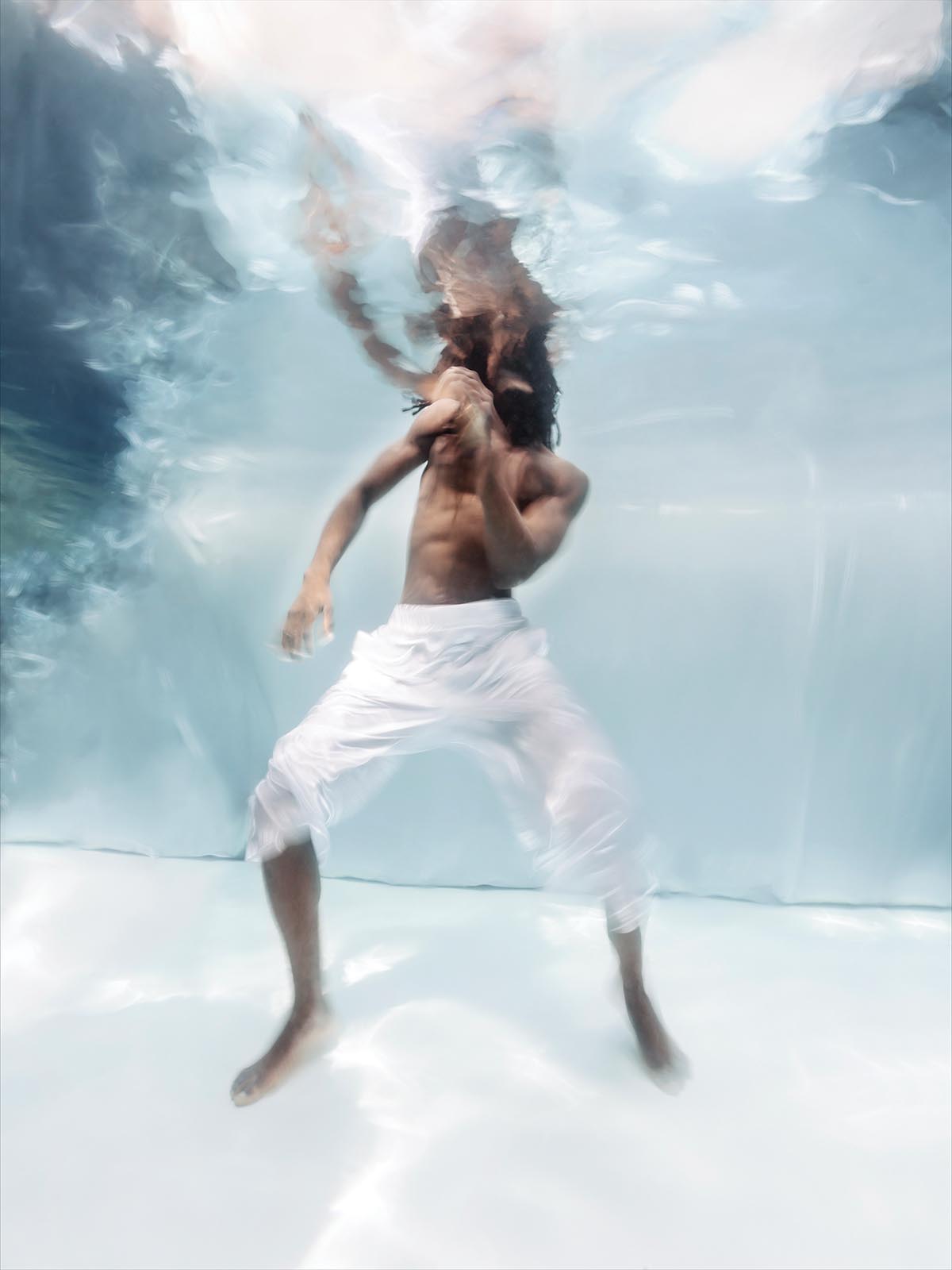
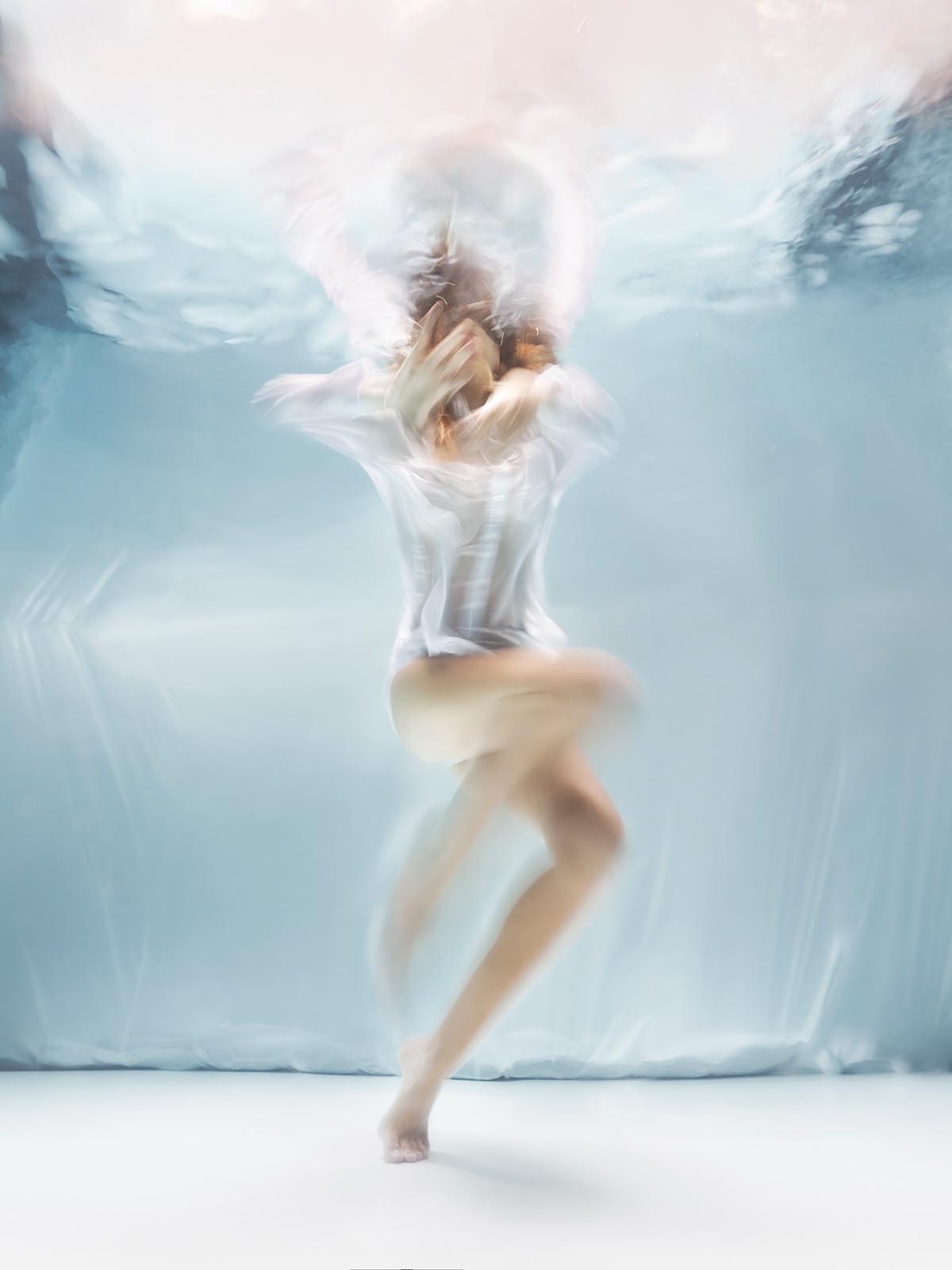
As she has throughout her photographic career, Cole developed or invented techniques and processes that helped her photograph underwater. There were equipment challenges, from finding the best camera and flash setup to selecting goggles that wouldn’t fog up. And there were physical issues to contend with, such as leg cramps, itchy red eyes, and being weighed down in the pool for extended periods. (A typical shoot lasts two full days.)
Finding models who can work while submerged can be a challenge. “The best models don’t just pose underwater; they help create a narrative,” explains Cole. “And after all, it’s not like they are in a comfortable studio.”
She often uses dancers instead of fashion models because they’re generally stronger and more accustomed to moving through spaces and dealing with the unexpected. “On a recent shoot I had a model wearing a 60-pound fashion gown who got tangled up with some props and got herself stuck momentarily at the bottom of the pool,” remembers Cole. “We were panicking but she was unflappable. Like many dancers, she was used to being thrown in the air and contorting her body.”
People often assume Cole makes her images from outside a water tank. Not so. “I am always in the water with the model,” she says. “If I am asking them to pose in such unfamiliar circumstances and give them requests such as ‘Do a somersault,’ often weighted down in cumbersome, often confining costumes, I need to be in the same space with them.”
EVER THE EXPLORER
As her innovative underwater photography series have proven, Cole has long been fascinated with the creation of images. It’s not surprising that she’s been experimenting for over a decade to blend one of the oldest forms of photography, wet collodion, with the newest, digital. In effect, she now splits her time largely between her two favorite activities: photographing in her pool and creating images in her darkroom.
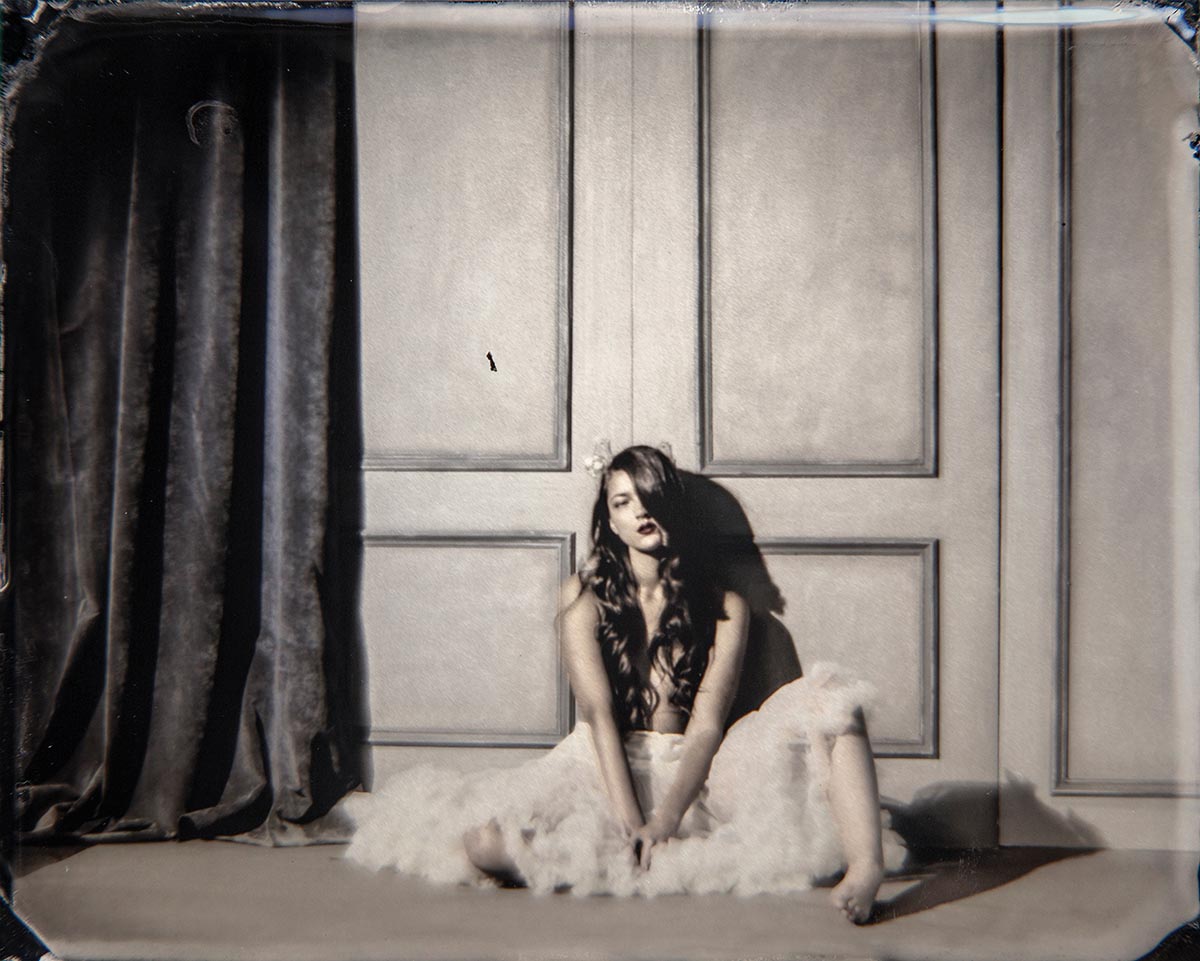
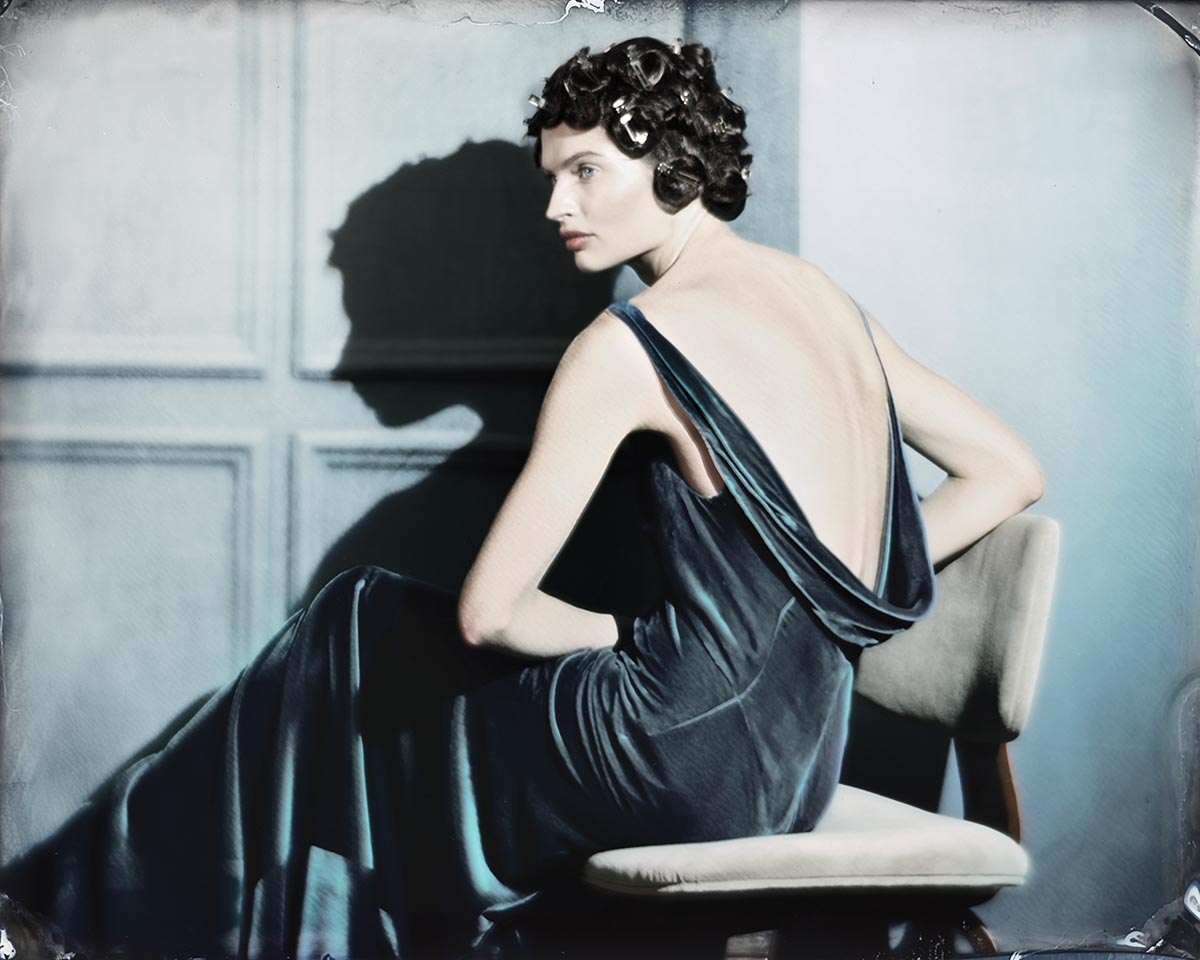
“It’s taken me a long time to learn this complex process of making film on glass and, as usual, I’ve made tons of mistakes,” says Cole. “When I saw the potential of tintypes I immediately wondered how I could make this process mine. I wanted to create something I hadn’t seen before.”
She spent years learning and experimenting with the technique. After creating handmade film, she scans, enlarges, and retouches or manipulates it digitally. “Over the years I’ve been tweaking and changing the way I produce these pictures, and I think I can say I’ve made something that finally feels like my own.”
Robert Kiener is a writer in Vermont.

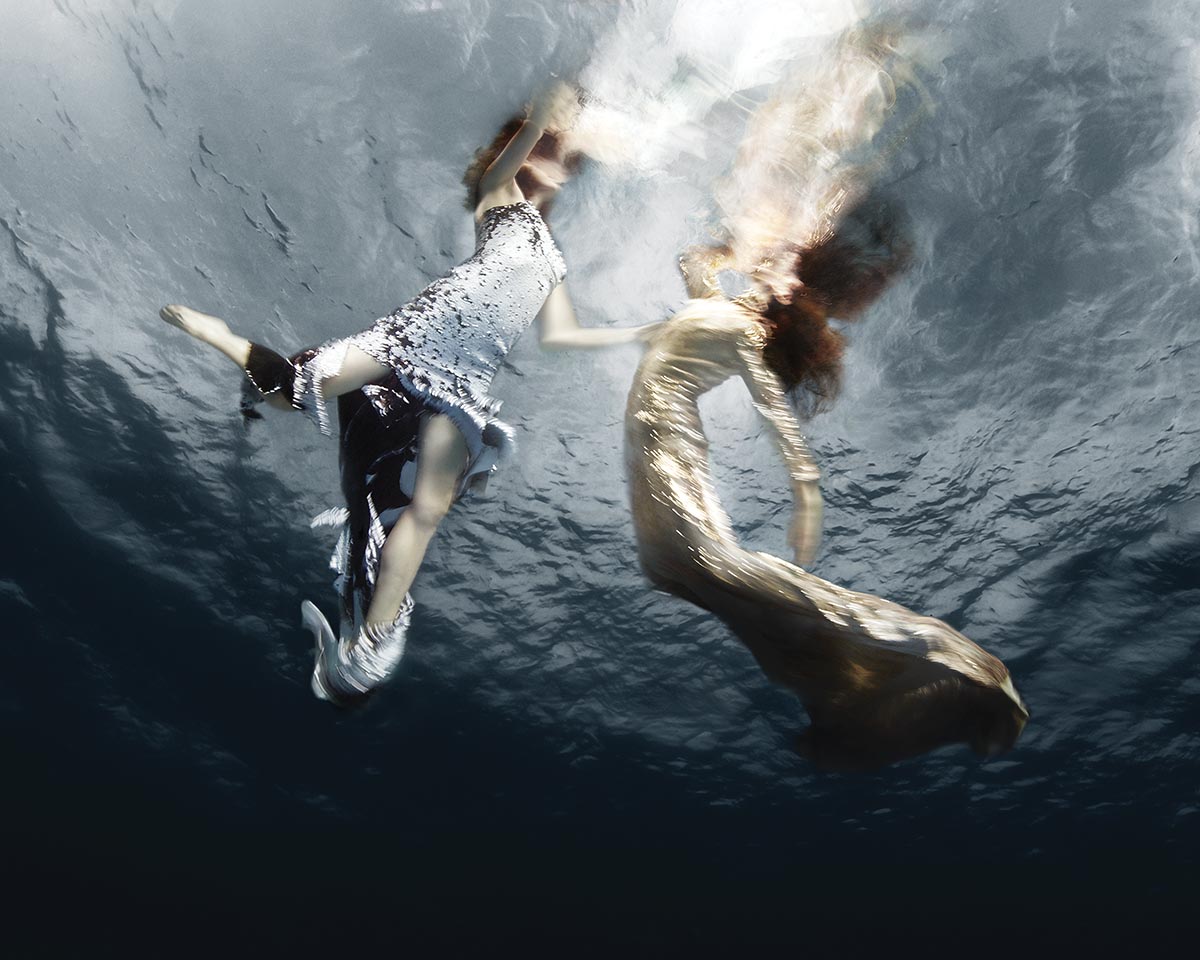
 View Gallery
View Gallery